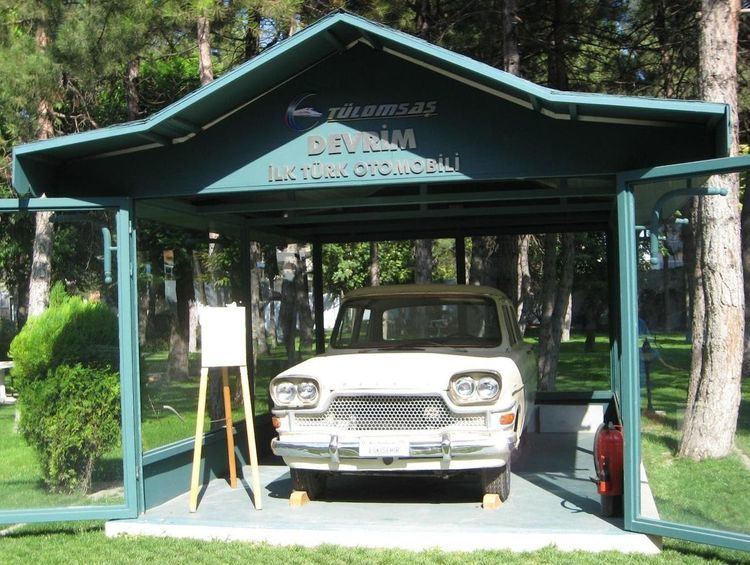Production 4 units | Model years 2014 | |
 | ||
Designer The car is designed and engineered from scratch by Turkish Engineers. Body and interior is designed by:Eng. Nurettin Erguvanlı (M.Sc.)Eng. Ercan Türer (M.Sc.)Architect Kemal Elagöz (M.Sc.) Class Middle sized, road type. | ||
Devrim ([devˈɾim], English: Revolution) was the first ever automobile designed and produced in Turkey.
Contents
Automotive Industry Congress
On 15 May 1961, the Otomotiv Endüstri Kongresi (Automotive Industry Congress) was opened by President Cemal Gürsel. In his inaugural speech, he said:
After the congress, Gürsel issued his order to build a prototype engine and car meeting the requirements of the country. These prototypes would be compared with the best cars of the time, the shortcomings would be identified, and project development work would be undertaken in order to produce the best possible car in Turkey.
Design and production of Devrim
In 1961, President Cemal Gürsel ordered 24 engineers, working in various companies, to build a car fully designed and produced in Turkey. It was to be demonstrated during the Republic Day celebrations on October 29, 1961.
After 130 days of hasty labor at the workshop in Eskişehir, which later became the TÜLOMSAŞ factory, the engineers managed to make four prototypes of the automobile. One was black, and the others were cream coloured. It was named Devrim (the Turkish word for Revolution.)
The schedule was extremely tight nonetheless four cars could be completed and two of these cars (cream and black coloured) were shipped to Ankara for the Republic Day celebrations. Polishing paint of the black car was done while on the train to Ankara. None of the cars had gasoline in them, as a safety precaution, and the cars were filled with little fuel, only for maneuvering. Since the compression rate had been increased to boost engine performance, high octane fuel was needed to run the engines without engine knock. High octane fuel was only available in Ankara back then. On the day of the celebrations, President Cemal Gürsel got into the black car before it was refuelled for a ceremonial ride. After proceeding approximately a hundred meters, the vehicle came to a halt. Then the President got off from the black car and got on to the cream colored car at the back (which had been filled up earlier) and went to Anıtkabir with it. The two cars then completed the ceremonial runs without any problem. The newspaper headlines in the following day were, "Devrim went 100 meters and it broke down." The car became the subject of jokes for many years. It is worth noting that roughly at the same dates the car of the Queen of England broke down and lords pushed the car during ceremony.
Devrim was never mass-produced. One reason for that was the cars were crafted prototypes and the production process was not well-documented, with almost no technical drawings remaining from the production phase. Another reason was that the demand was not high enough to make mass production feasible. Conversely Anadol factory has been founded just a few years after (1966) and started serial production of passenger vehicles. The founder of Anadol automobile factory Vehbi Koç was a Ford dealer and before Devrim project he was not believed that it was possible to produce cars in Turkey.
Conspiracy theories
A popular conspiracy theory about the failure of mass production suggests that the American auto giants, who sold most of the foreign cars in Turkey back in the early 1960s (even the police cars were GM and Ford models, especially Chevrolet, until the late 1970s) had approached the Turkish government to cancel the project, and it was decided to keep the relations smooth between the two close NATO allies.
Five years later, in 1966, Anadol became Turkey's first mass production passenger car, produced by Otosan (a joint venture between Ford Motor Company of the United States and Koç Holding of Turkey.)
Legacy
Three of the prototypes were scrapped due to the bureaucratic restrictions, their engines converted to diesel generators, but the last one is kept, in working condition, inside the TÜLOMSAŞ factory in Eskişehir, where it was built. The remaining Devrim is open for visit at TÜLOMSAŞ factory in Eskişehir everyday between 08:00-17:00.
The story of the building process and hard efforts of the 24 engineers who worked on Devrim automobiles became the subject of a film, which was released in Turkey in 2008 with the name of "Devrim Arabaları" (English: Cars of Revolution).
In late 2010, students from the National University of Science and Technology in Pakistan developed a hybrid car with inspiration from Devrim, and named this car Devrim II.
